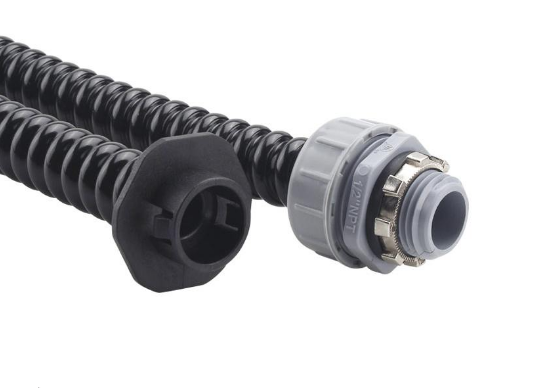Sep. 14, 2023
Liquid tight flexible non metallic conduit (LFNC) offers a versatile solution for protecting electrical cables from environmental elements. However, like any technology, LFNC has its limitations that must be considered when selecting conduit systems for specific applications. In this article, we delve into the limitations of LFNC, shedding light on scenarios where alternative conduit choices might be more suitable.
1. Temperature Extremes:
While LFNC is designed to withstand a range of temperatures, extreme heat or cold can impact its performance. In extremely hot conditions, the conduit material may become more pliable, potentially affecting its structural integrity. Similarly, in extremely cold temperatures, LFNC could become less flexible, making installation and routing more challenging.
2. UV Degradation:
Not all LFNC materials are UV-resistant. When exposed to direct sunlight for extended periods, some nonmetallic materials may degrade and become brittle over time. This can compromise the conduit's flexibility and overall performance, particularly in outdoor installations.
3. Limited Mechanical Protection:
While LFNC offers some mechanical protection to enclosed cables, it may not be as robust as rigid metal conduits or other reinforced conduit types. In applications where heavy machinery, vehicles, or other heavy objects may come into contact with the conduit, additional protective measures may be necessary.

4. Chemical Exposure:
LFNC's resistance to chemicals can vary depending on the specific materials used in its construction. In environments where the conduit could come into contact with aggressive chemicals or corrosive substances, alternative conduit materials with higher chemical resistance might be more appropriate.
5. Crush Resistance:
LFNC's flexibility can also be a limitation in certain scenarios. The conduit can be more susceptible to crushing or collapsing if subjected to significant pressure, particularly in areas where foot or vehicle traffic is common. In these cases, rigid conduit types may offer better crush resistance.
6. Limited Fire Resistance:
LFNC materials are generally not as fire-resistant as some other conduit materials, such as metal conduits. While LFNC can provide some level of protection to cables in the event of a fire, it may not offer the same level of fire resistance as other alternatives.
7. Installation Complexity:
While LFNC is designed to be flexible and easy to install, its flexibility can also present challenges. In some cases, particularly complex installations or layouts with numerous bends and turns, the conduit may be harder to install effectively without kinks or bends that could affect cable integrity.
8. Longevity and Durability:
LFNC's durability can vary depending on the quality of the materials used. In applications where the conduit is constantly exposed to harsh conditions, such as extreme weather or heavy mechanical stress, it may have a shorter lifespan compared to more robust conduit options.
9. Electrical Interference:
Certain LFNC materials may not provide adequate electromagnetic shielding. This can potentially result in electromagnetic interference (EMI) or radio frequency interference (RFI) affecting nearby electronic equipment or communication systems.
10. Size Limitations:
LFNC's flexibility can lead to limitations in terms of the size and number of cables it can effectively protect. In applications requiring larger cable bundles, the conduit's interior space may be limited, potentially leading to difficulties in installation and cable management.
Conclusion:
While Liquid tight flexible non metallic conduit (LFNC) offers valuable benefits in cable protection, it's crucial to recognize its limitations and consider them when choosing conduit systems for specific applications. Careful assessment of environmental conditions, mechanical stresses, temperature ranges, and other factors is essential to ensure that LFNC is the appropriate choice for a given installation. In some scenarios, alternative conduit options, such as rigid metal conduits or specialized conduit types, may better address the specific challenges and requirements of the installation. By understanding both the strengths and limitations of LFNC, electrical professionals can make informed decisions that result in reliable and effective cable protection.
If you want to know more information about LFNC, please contact us. We will provide professional answers.
Explore [The Insider's Views](https://www.conduit-flexible.com/guestbook/).















